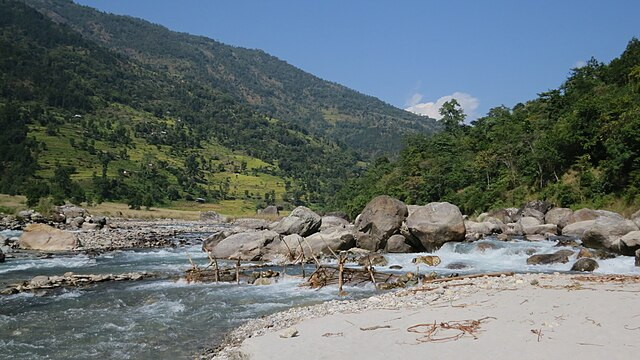Tamur River: The Jewel of Eastern Nepal's Himalayas Professional
Nov 30th, 2023 at 10:13 Blogs Dhankutā 282 views Reference: 1175Location: Dhankutā
Price: Contact us
Tamur River: The Jewel of Eastern Nepal's Himalayas
Introduction:
Flowing majestically through the eastern Himalayas of Nepal, the Tamur River stands as a testament to the unspoiled beauty and dynamic force of the country's waterways. Originating high in the mountains near Kanchenjunga, the third-highest peak in the world, the Tamur River offers a journey through remote valleys, diverse landscapes, and vibrant cultural tapestries. This article explores the geological origins, cultural connections, and environmental significance of the Tamur River.
Geographical Origin and Course:
The Tamur River begins its course in the Kanchenjunga Conservation Area, where glacial meltwaters and mountain streams converge to form its headwaters. Descending from the high altitudes, the river winds its way through the rugged terrain of eastern Nepal, creating a network of tributaries and shaping the landscapes it traverses.
As the Tamur flows southward, it joins the powerful Sapta Koshi River, contributing to the vast network of waterways that characterize the eastern region of Nepal. The river's course takes it through remote valleys, dense forests, and traditional villages, providing a unique glimpse into the rich natural and cultural heritage of the area.
Cultural Connections:
The Tamur River basin is home to a diverse array of ethnic communities, including the Limbu, Rai, and Sherpa people. Each community along the river's course contributes to the cultural tapestry of the region, with traditional practices, festivals, and rituals reflecting the deep connection between the people and the Tamur.
The riverbanks are adorned with small settlements, ancient monasteries, and cultural landmarks, showcasing the unique heritage of the communities that have coexisted with the Tamur for generations. The river holds cultural significance, with ceremonies and rituals conducted along its shores, emphasizing its role as a life-sustaining and spiritually significant entity.
Adventure and Exploration:
The Tamur River has gained recognition as an ideal destination for adventure enthusiasts seeking both exhilarating whitewater experiences and the breathtaking beauty of the Himalayas. The river's upper reaches offer challenging rapids, making it a sought-after location for whitewater rafting and kayaking. The pristine surroundings and remote nature of the Tamur add to the allure, providing a sense of wilderness and exploration for those embarking on its waters.
Environmental Significance:
The Tamur River and its surrounding landscapes contribute significantly to the environmental diversity of eastern Nepal. The river creates habitats for a variety of flora and fauna, ranging from alpine meadows to subtropical forests. Conservation efforts are crucial to preserve the Tamur's ecosystems, with initiatives focusing on sustainable development, habitat protection, and responsible tourism.
Challenges and Conservation Efforts:
While the Tamur River remains a symbol of natural beauty and adventure, it faces challenges such as pollution and habitat degradation due to human activities. Conservation initiatives aim to address these issues, promoting responsible tourism, community engagement, and sustainable development to ensure the long-term health of the river and its ecosystems.
Conclusion:
The Tamur River, with its origins in the majestic Kanchenjunga, is a jewel in the crown of eastern Nepal's Himalayas. From its cultural importance to its role as an adventure destination, the Tamur is a dynamic force that invites exploration and appreciation. As Nepal continues to develop, it is crucial to recognize the delicate balance between utilizing the river's resources and preserving its natural and cultural heritage. The Tamur River, with its pristine flow and cultural echoes, remains a source of inspiration and sustenance for the communities that call its banks home.


